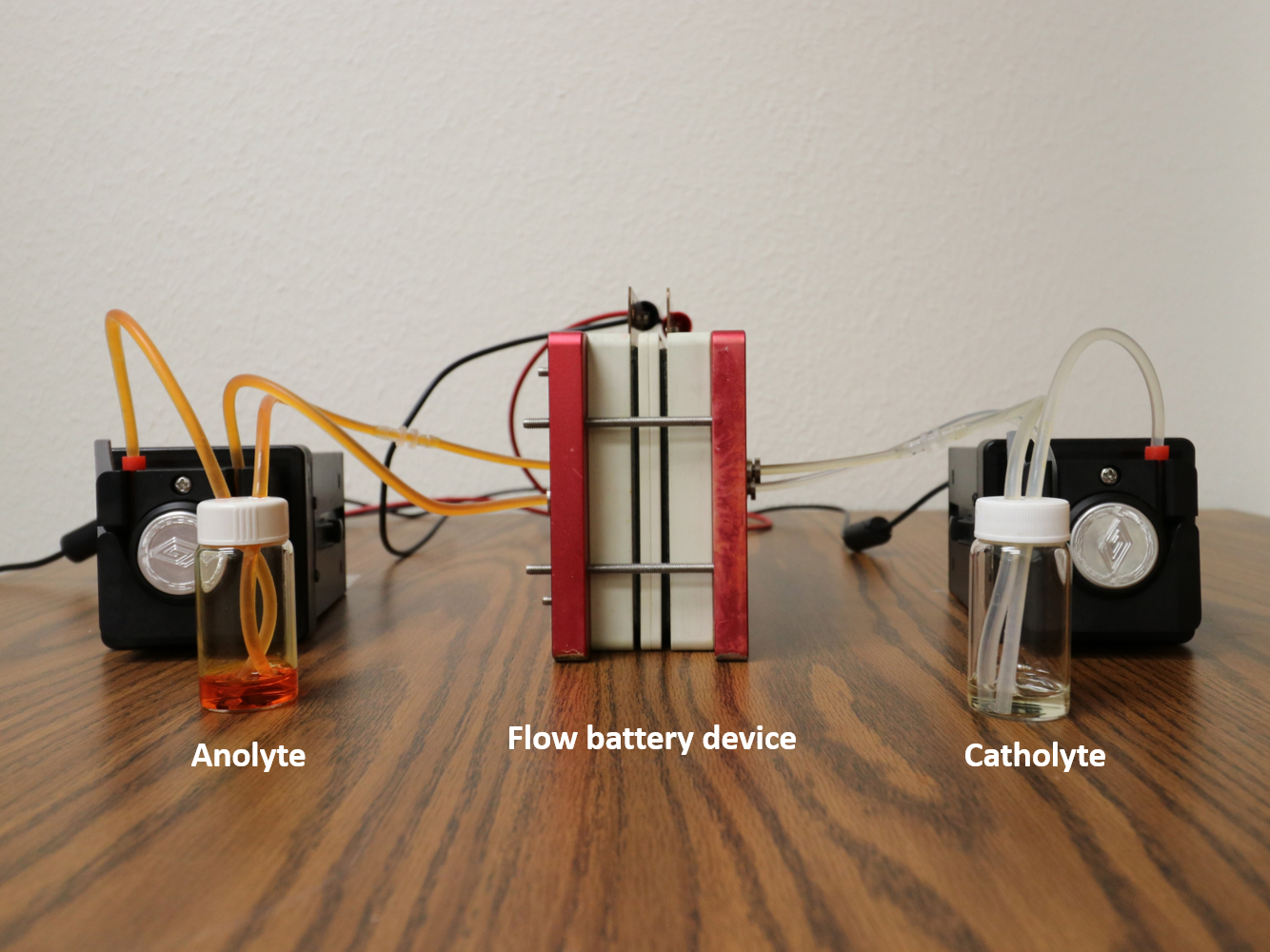An abundant, organic material found in industrial dyes could be the key to advancing a type of battery with promise for storing and deploying large quantities of renewable energy. New research from The University of Texas at Austin’s Cockrell School of Engineering introduces new materials using azobenzene to open the door for “high-capacity, long-life non-aqueous flow batteries.”
Flow batteries are a type of storage devices that use tanks of electrolytes that flow through the positive and negative electrodes to help ions move. They are capable of storing enough energy to power swaths of homes and even cities. But they typically rely heavily on vanadium, a rare and expensive metal with few viable alternatives.
Non-aqueous flow batteries — those that use solvents other than water — offer the potential of higher energy density and voltage than other types of flow batteries. However, technical issues, such as availability of active materials and battery chemistry struggles, continue to impede larger scale adoption. The new materials discovery, published recently in Nature Communications, brings these non-aqueous batteries closer to wider use by improving the stability and capacity of the electrolytes.

These batteries have the potential to more efficiently store energy, particularly from renewable sources such as solar and wind. That opens up the potential to power more homes, neighborhoods and cities via renewable resources.
“The major development of flow batteries could make the utilization of renewable energy sources more efficient, thus creating a green and sustainable future for the general public,” said Guihua Yu, associate professor in the Walker Department of Mechanical Engineering and Texas Materials Institute. “The bonus of high energy density of the azobenzene-based electrolyte is that it may expand the use of flow batteries into more home- and building-scale power supply.”
As batteries age and endure more charge-discharge cycles, their capacity to store energy tends to decline. One of the more promising aspects of the azobenzene-based electrolyte is its ability to hang on to that capacity over time.
“The azobenzene electrolyte saw its capacity decline just .008% per cycle,” said Leyuan Zhang, lead author of the paper and a graduate student in Yu’s research group. “Another flow battery electrolyte in the experiments, this one featuring ferrocene, exhibited a 3x larger decline in capacity with each cycle of .025%. Over several thousand cycles, that difference adds up.”
Yu notes that this discovery is part of a long-term research effort to make these types of flow batteries more viable. He described three more major steps in the research:
- Further optimizing the azobenzene-based electrolytes to make them more stable over a longer period. To power infrastructure, batteries need to be able to handle between 3,000 and 10,000 charge-discharge cycles.
- Developing organic materials that can serve as the positive electrolyte that complements the azobenzene-based negative electrolyte.
- Working with other experts, including scientists from Pacific Northwest National Laboratory, on more stable, highly conductive membranes that separate the various components of the battery.
The research was funded through grants from ExxonMobil and UT’s Energy Institute to support the vision to develop advanced battery systems for grid-scale energy storage applications.







